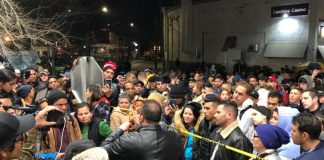Water researchers at the University of Regina are using the results of their 11-year study in south Saskatchewan to conclude increasing algae blooms in the area’s lakes are putting out more toxins that could be harmful to humans.
Working out of the U of R’s Institute of Environmental Change and Society, the group of four researchers studied from 2005 to 2016 the following lakes: Buffalo Pound, Last Mountain, Pasqua, Katepwa, Crooked and Wascana. The area, called the Qu’Appelle River drainage basin, covers 52,000 square kilometres, or roughly 40 per cent of south Saskatchewan; that’s about 89 per cent of Lake Michigan’s surface area in size.
“That’s the trifecta that interacts to really degrade the surface waters in Saskatchewan, at least in southern Saskatchewan,” said the study’s designer, Peter Leavitt.
To the naked eye of the regular boater, fisher or wake-boarder, such algae can appear in one of three ways, he said.
“They’re the kind of green scum that you see floating on the lakes. Sometimes it looks like somebody poured a can of paint on them; those are the really toxic ones. Sometimes it looks like someone emptied their lawn-mower clippings bag into the lake, (like) there’s little shards of grass, and those too are toxic. Then there’s other times where the lake will look a little bit grey.”
Leavitt believes those algae produce microcystin as a deterrent, “like a chemical warning: ‘Stay away from me, I’m toxic. If you ingest me, I’ll be bad for you.’ ” It’s hepatotoxin, he said, meaning it will damage an organism’s liver.
“It doesn’t get through the (human) gut wall, the intestinal lining, very well, but if it does, it’s quite lethal. If you actually got it in your bloodstream, it would be like getting a dose of cyanide. It’s got a higher molecular-toxicity than cyanide,” Leavitt said.
Humans tend to pass the toxin through their systems, he said, however the key is to avoid chronic exposure to microcystin.













